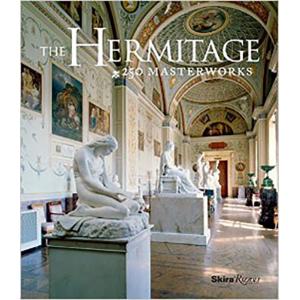Paintings of the 19th-Century from Collectors of St. Petersburg

The tradition of collecting art in Russia, began by Catherine the Great, evolved into state policy during the ninetieth century. On February 7, 1852 the New Hermitage Museum was opened to visitors, making it the first Russian public museum. Today's collection of ninetieth century paintings at the Hermitage is comprised of artwork owned by various collectors of the Russian elite who lived in St. Petersburg in the 1800s. After Lenin’s degree of nationalization in 1918 private collections such as those of Tsar Alexander III and Nicolas II, Grand Duchess Yelena Pavlovna and the Yusupov family were transferred to the Hermitage. The remarkable Kushelev Collection, which was bequeathed to the Imperial Academy in 1862, was transferred to the Hermitage Museum 1922 and became the real core of the Hermitage’s collection of nineteenth century European art.
Art Movements of the Ninetieth Century
During the 1800s Europe witnessed some of the most significant developments in the history of art and the Hermitage’s collection testifies to the tremendous creative innovations that took place during these years. The collection of ninetieth century painting amounts to approximately 1,000 paintings and represents the following art movements: neoclassicism (1750-1850), romanticism (1780-1850), realism (1848-1900), orientalism (1800-1890), impressionism (1865-1885) and post-impressionism (1885-1910). Some of these paintings were in vogue when they were painted and some were not.
The collection of masterpieces that upheld the “ideal” of beauty, sanctioned by the Paris Salon, are represented by the art movements of neoclassicism, romanticism and orientalism. One such piece is a tender painting by Paul Delaroche, A Christian Martyr Drowned in the Tiber During the Reign of Diocletain (1853). Delaroche never recovered from the death of his wife in 1845 and thereafter painted nothing but dead young women. The collection also includes one of Charles Chaplin’s many bird nest paintings, Young Girl with a Nest (1860), and Jules Lefebvre’s excuse to paint a nude woman, Mary Magdalene in the Cave (1876). Pushing the limits of romanticism into a whole new movement called orientalism is Ferdinand Roybet’s Odalisque (1870).
The Kushelev Collection
The Hermitage’s Collection of over 250 paintings by the Barbizon School (1830-1870) represents a group of artists whose works were not popular when they were painted. The Hermitage inherited this collection from the founder of the Kushelev Gallery, Nikolai Alexandrovich Kushelev-Bezborodko (1834-62), who when still a very young man, inherited an enormous fortune as well as part of a group of Old Master paintings from Alexander Bezborodko, one-time chancellor of Catherine the Great. Count Nikolai soon became a worthy successor to Catherine the Great’s “irreplaceable” chancellor.
Nikolai built a splendid palace in St. Petersburg and assembled an extensive collection that rivaled the leading collections in the city. Nikolai bought his first work at the age of 15 and, after a brief career in the army, devoted himself wholly to his painting collection. Kushelev’s goal was to add contemporary art to his collection. Fated to live for all-too-short a time, he nevertheless managed in the space of five years to establish a genuine museum. Kushelev-Bezborodko brought back to Russia not only pictures by such fashionable French Romantic painters as Gérôme, Bouguereau and Meissonier, but also works less fashionable by Delacroix, Diaz de la Pena, Boulanger, Rousseau and Corot. This was at a time when the work of these artists had yet to meet with the universal approval even in their own homeland, and was often crudely attacked. For this reason its important to know that Kushelev considered himself to have a revolutionary role in the art scene by collecting artists who were just emerging onto the scene. One such masterpiece that is prominently displayed at the Hermitage today includes one of Constant Troyon’s “cow” paintings, Departure for the Market (1859). This painting represents one of the finest examples of the Barbizon School.
At his death in 1862 Nikolai left his 275 paintings to the Imperial Academy of Fine Arts in St. Petersburg. On his death-bed he said, “the gallery is to be open at all times to artists and the public, without any constraints on dress.” Other private collections were later added to his. The gallery attracted many visitors and for Russian painters it was a source of inspiration, “our window on Europe,” as Ilya Repin put it in 1937. The young count’s death left a vacuum in St. Petersburg that was never quite filled. From that moment the center of activity for collectors increasingly became Moscow.

About the Author
Cathy Locke is an award-winning fine art painter, professor, and published writer, specializing in Russian art of the 19th and 20th centuries. She is the editor of Musings-on-Art.org.
Cathy’s artwork: www.cathylocke.com












